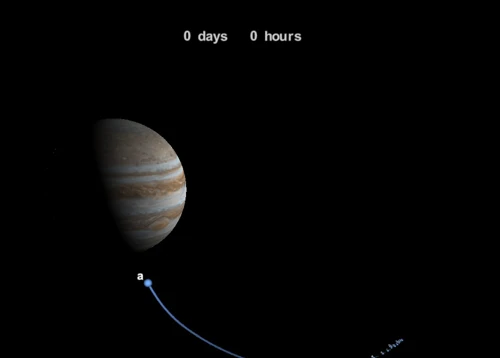Comet Shoemaker-Levy 9: A Close Encounter with Jupiter
Imagine a dramatic cosmic event that captured the world’s attention and forever changed our understanding of the universe. Such an event occurred in July 1994 when a fragmented comet made a close pass by the largest planet in our solar system, Jupiter. This extraordinary encounter became known as the Shoemaker-Levy 9 impact, named after the team of scientists who discovered the comet. This captivating celestial event left scientists and astronomers in awe as they witnessed a series of spectacular collisions between the fragments of the comet and Jupiter’s colossal atmosphere. In this article, we will delve into the fascinating journey of Comet Shoemaker-Levy 9, the preparations made for its exploration, the scientific significance of the event, and its enduring legacy in the field of space exploration. Prepare to be amazed as we unravel the story of one of the most memorable encounters in our cosmic backyard.
Contents
- Discovery of Comet Shoemaker-Levy 9
- The Path to Jupiter
- Preparation and Exploration
- A Spectacular Collision
- Scientific Significance
- Impact on Jupiter’s Atmosphere
- Observations and Analysis
- Legacy and Further Discoveries
- Conclusion
-
Frequently Asked Questions
- 1. What made the discovery of Comet Shoemaker-Levy 9 so significant?
- 2. How did astronomers determine that Shoemaker-Levy 9 was on a collision course with Jupiter?
- 3. What caused the fragmentation of Comet Shoemaker-Levy 9?
- 4. How many fragments did Comet Shoemaker-Levy 9 break into?
- 5. What were the impacts of the comet fragments on Jupiter like?
- 6. Did the collisions between the comet fragments and Jupiter’s atmosphere have any lasting effects?
- 7. How did scientists observe and study the impacts on Jupiter?
- 8. What did the study of Comet Shoemaker-Levy 9 teach us about the composition of comets?
- 9. Did the collision of Comet Shoemaker-Levy 9 with Jupiter pose any risk to Earth?
- 10. What is the lasting legacy of the Shoemaker-Levy 9 impact on our understanding of the universe?
- References
-
Frequently Asked Questions
- 1. How was Comet Shoemaker-Levy 9 discovered?
- 2. How did Comet Shoemaker-Levy 9 end up on a collision course with Jupiter?
- 3. What preparations were made for the close encounter with Jupiter?
- 4. What led to the spectacular collision of Comet Shoemaker-Levy 9 with Jupiter?
- 5. What was the scientific significance of the encounter?
- 6. How did the impact affect Jupiter’s atmosphere?
- 7. What were some of the key observations and analysis made during the event?
- 8. What is the legacy of Comet Shoemaker-Levy 9’s close encounter?
- 9. Did the close encounter with Jupiter lead to further discoveries?
- 10. What can we conclude from the close encounter with Jupiter?
- References
- Read More
Discovery of Comet Shoemaker-Levy 9
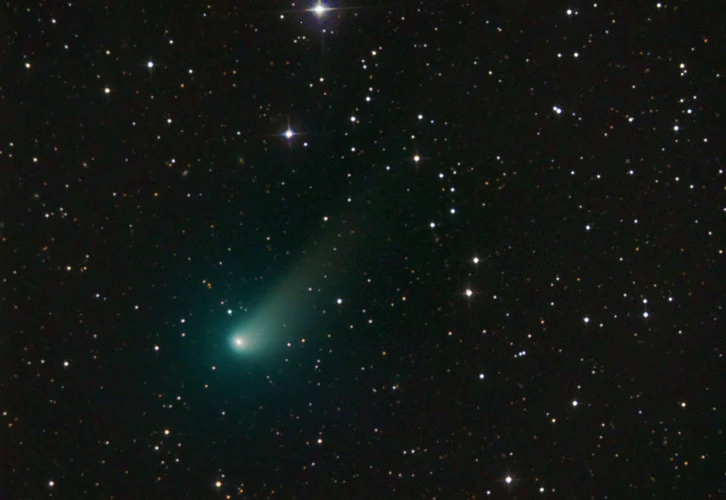
Comet Shoemaker-Levy 9 was discovered in March 1993 by Carolyn and Eugene Shoemaker, along with David Levy. The trio made this groundbreaking discovery using the Palomar Observatory in California. While searching the night sky for near-Earth objects, the team spotted a peculiar comet with an elongated shape. Further observations revealed that the comet had fragmented into multiple pieces. This was an unusual sight, as it was the first time astronomers had observed a fragmented comet in our solar system. The discovery of Comet Shoemaker-Levy 9 sparked immediate interest and excitement within the scientific community. Astronomers quickly realized that this comet was on a collision course with Jupiter, marking a rare and historic event in our solar system. The discovery of Shoemaker-Levy 9 opened up new avenues of research and raised numerous questions about the nature and dynamics of comets. Scientists eagerly awaited the comet’s approach to Jupiter, hoping to witness an unprecedented cosmic event.
The Path to Jupiter
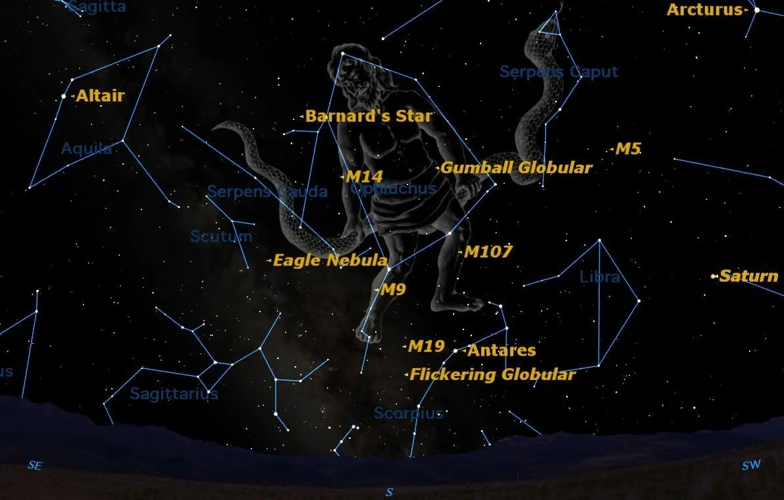
Comet Shoemaker-Levy 9 embarked on a momentous journey towards its fateful encounter with Jupiter. As the fragments of the comet continued their voyage through the solar system, their path gradually brought them closer and closer to the massive gas giant. The gravitational pull of Jupiter played a crucial role in shaping the comet’s trajectory. Jupiter’s immense gravitational force altered the orbit of Shoemaker-Levy 9, causing its fragments to eventually succumb to the planet’s gravitational pull. Over a period of months, the fragments approached Jupiter with increasing speed, hurtling through space on their inevitable collision course. This cosmic dance between the comet and the planet was a sight to behold, captivating both scientists and stargazers alike. The years of anticipation and preparation led to this awe-inspiring moment as the fragmented comet made its final approach towards the gas giant, setting the stage for an unprecedented cosmic spectacle.
Preparation and Exploration
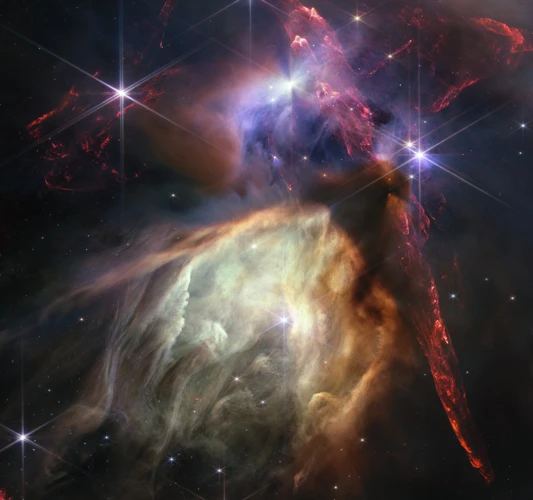
Preparation and exploration for the encounter between Comet Shoemaker-Levy 9 and Jupiter involved a collaborative effort by scientists and space agencies from around the world. In the months leading up to the impact, astronomers studied the trajectory and predicted the precise time and location of each collision between the comet fragments and Jupiter’s atmosphere. This required the use of powerful telescopes and advanced computer simulations to accurately model the complex dynamics of the event. Additionally, space missions such as NASA’s Galileo spacecraft played a crucial role in capturing high-resolution images of the collision. The spacecraft was strategically positioned in orbit around Jupiter to observe the impact sites and gather valuable data about the aftermath of the collisions. The preparation and exploration phase allowed scientists to plan and execute a comprehensive study of the phenomenon, ensuring that no opportunity for scientific discovery would be missed. The combined efforts of astronomers, researchers, and space agencies resulted in a wealth of valuable data and insights into the dynamics of comet impacts on giant planets like Jupiter.
A Spectacular Collision
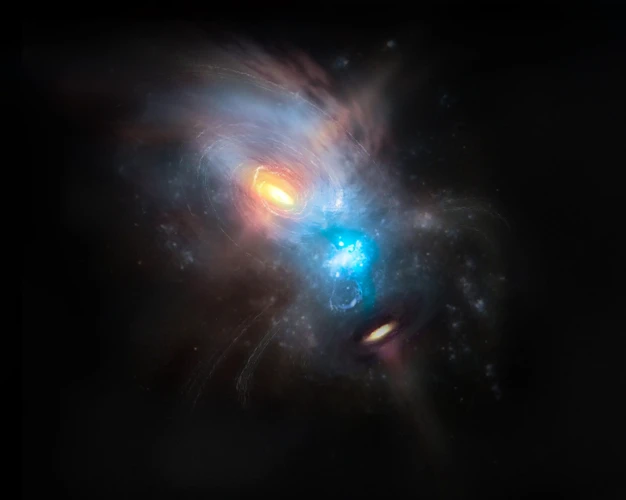
The collision of Comet Shoemaker-Levy 9 with Jupiter in July 1994 was an awe-inspiring spectacle that captivated scientists and stargazers alike. As the fragmented comet approached Jupiter, it unleashed a series of powerful impacts that left a lasting mark on the gas giant’s atmosphere. The impacts were so significant that they were visible from Earth, with telescopes trained on Jupiter capturing the breathtaking sight. Each fragment of the comet unleashed a tremendous amount of energy upon impact, resulting in massive explosions that sent plumes of gas and debris high into Jupiter’s atmosphere. The largest impact was dubbed “Fragment G,” which created a fireball equivalent to the explosion of six million megatons of TNT. These impacts released an enormous amount of energy, generating shockwaves that spread throughout Jupiter’s atmosphere and causing massive disturbances. The resulting dark impact scars on Jupiter’s clouds were visible for weeks and provided scientists with valuable data about the composition and dynamics of the gas giant’s atmosphere. These collisions marked the first time in recorded history that astronomers witnessed the direct effects of a comet impacting a planet, emphasizing the violent and dynamic nature of our solar system.
Scientific Significance
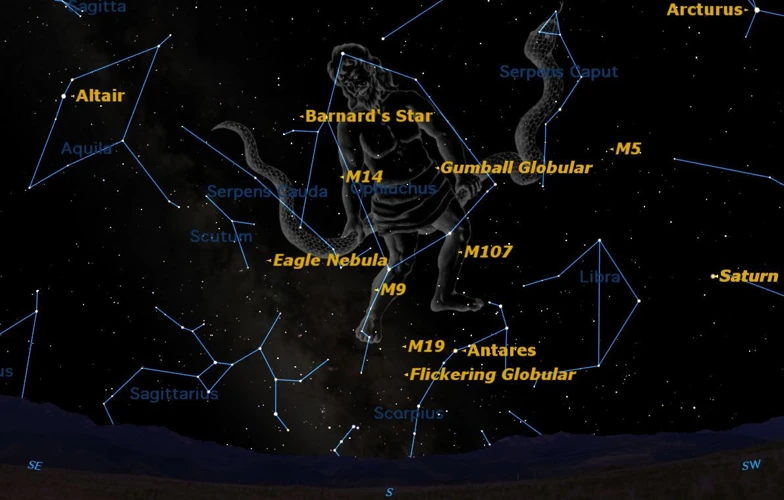
The scientific significance of the Shoemaker-Levy 9 impact on Jupiter cannot be overstated. This rare event provided astronomers with a unique opportunity to study the effects of a comet collision on a gas giant like Jupiter. By observing the impact and subsequent atmospheric disturbances caused by the fragments, scientists gained valuable insights into the composition, structure, and behavior of Jupiter’s atmosphere. The collisions released an enormous amount of energy, generating massive fireballs and shockwaves that traveled through the planet’s atmosphere. These disturbances created visible dark scars on Jupiter’s clouds, which persisted for weeks. The event also produced plumes of gas and dust that spread across the planet. Scientists used a variety of instruments and telescopes to monitor and analyze the aftermath of the impacts, including spectrographs to identify the chemical composition of the ejected material. The data collected during this extraordinary event helped refine our understanding of the dynamics of celestial bodies, the composition of comets, and the impact processes in the solar system. The scientific significance of the Shoemaker-Levy 9 impact reverberated throughout the field of astronomy and continues to influence our knowledge of the cosmos.
Impact on Jupiter’s Atmosphere
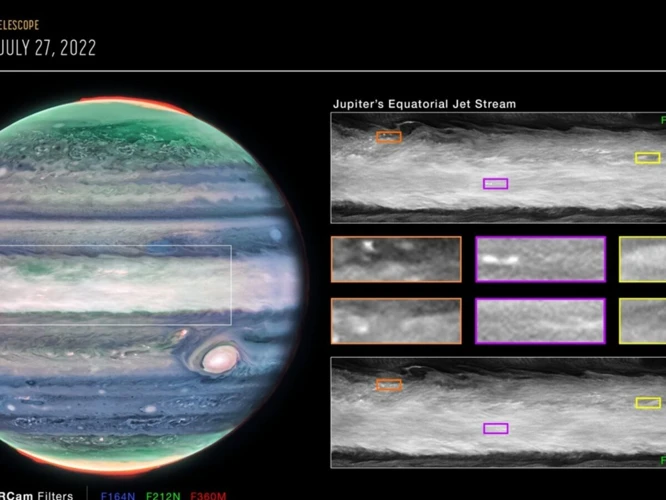
The impact of Comet Shoemaker-Levy 9 on Jupiter’s atmosphere was nothing short of spectacular. In July 1994, as the fragments of the comet collided with Jupiter, they unleashed an immense amount of energy. The atmospheric entry of these fragments created massive fireballs that rose high above Jupiter’s cloud tops. The impacts left behind dark scars on the gas giant, visible even from Earth-based telescopes. These scars, referred to as “dark ejecta curtains,” were immense in size and had a complex structure. The collisions caused shockwaves to ripple through Jupiter’s atmosphere, generating enormous plumes of gas and debris. Some of these plumes reached heights of thousands of kilometers, towering above the planet’s cloud layer.
The impact events not only provided a stunning visual spectacle but also had a significant scientific impact. They revealed insights into the dynamics of Jupiter’s atmosphere and the behavior of large-scale impacts. By studying the evolution of the scars and the atmospheric disturbances caused by the collisions, scientists gained valuable knowledge about the composition and structure of Jupiter’s atmosphere. The impact of Shoemaker-Levy 9 served as a unique opportunity to observe and study the processes that occur during high-energy collisions in planetary atmospheres. The observations made during this event contributed to our understanding of impact phenomena, not only on Jupiter but also on other celestial bodies in the solar system. The data collected continues to inform research on planetary dynamics and atmospheric science, shedding light on the mysteries of our solar system.
Observations and Analysis

The observations and analysis of Comet Shoemaker-Levy 9’s impact on Jupiter provided scientists with invaluable insights into the dynamics of comets and planetary collisions. Astronomers around the world closely monitored the comet’s approach to Jupiter using a variety of ground-based telescopes and space-based observatories. These observations allowed scientists to track the individual fragments of the comet as they plunged into Jupiter’s atmosphere. The collisions produced massive fireballs and plumes of gas, creating a series of dark impact scars on Jupiter’s cloud tops.
By analyzing the light emitted from the impact sites, scientists were able to deduce valuable information about the composition of the comet and the physics of the collision. Spectroscopic analysis revealed the presence of various gases and compounds, including sulfur and water vapor, which provided insights into the composition of both the comet and Jupiter’s atmosphere. The observations also helped scientists determine the energy released during the collisions and the dynamics of the resulting shockwaves.
These observations and subsequent analysis allowed scientists to better understand the behavior of comets during impacts and provided valuable data for further studies on the formation and evolution of planets. The data obtained from the Shoemaker-Levy 9 impact played a crucial role in refining models of planetary formation and in understanding the role of comets in shaping the surfaces of celestial bodies within our solar system. The observations and analysis of this extraordinary cosmic event were a testament to the power of scientific exploration and advanced our understanding of the universe we inhabit.
Legacy and Further Discoveries

The legacy of the Shoemaker-Levy 9 impact on Jupiter extends far beyond the initial collision event. The observations and data gathered from this extraordinary cosmic encounter have had a lasting impact on our understanding of comets, planetary dynamics, and the overall processes that shape our solar system.
One of the major contributions of the Shoemaker-Levy 9 impact was the wealth of information it provided about the composition and structure of comets. By analyzing the spectroscopic data collected during the collision, scientists were able to identify the presence of various compounds such as water vapor, sulfur compounds, and complex organic molecules. This reinforced the belief that comets played a significant role in delivering volatile substances to planets, potentially influencing the development of life.
The Shoemaker-Levy 9 impact highlighted the importance of understanding the gravitational interactions between celestial objects. The fragmentation of the comet and subsequent collisions with Jupiter demonstrated the powerful gravitational pull of the gas giant and its ability to shape the paths of objects in its vicinity. This insight has helped scientists better comprehend the dynamics of other celestial bodies in our solar system and beyond.
The impact on Jupiter’s atmosphere also left a lasting imprint. The colossal explosions that occurred during the collisions triggered massive shockwaves and produced plumes that rose high above Jupiter’s cloud tops. These events provided an unprecedented opportunity for scientists to study the behavior and characteristics of planetary atmospheres under extreme conditions.
The legacy of Comet Shoemaker-Levy 9 has fueled further discoveries and investigations into the nature of comets, their interactions with planets, and the processes that shape our solar system. It has inspired astronomers to continue studying and unraveling the mysteries of our cosmic neighborhood. By pushing the boundaries of scientific knowledge, the legacy of Shoemaker-Levy 9 serves as a reminder of the profound impact celestial events can have on our understanding of the universe we inhabit.
Conclusion

In conclusion, the close encounter between Comet Shoemaker-Levy 9 and Jupiter was a momentous event in the field of space exploration. The discovery of this fragmented comet opened new doors for research and deepened our understanding of comets and their interactions with planets. The spectacular collisions between the fragments and Jupiter’s atmosphere provided invaluable insights into the dynamics of such impacts and the resulting effects on planetary atmospheres. Scientists were able to study the released energy, the formation of impact sites, and the subsequent atmospheric changes on Jupiter. The legacy of this event extends beyond just the scientific community, as it captivated the world and showcased the immense power and beauty of our solar system. The encounter with Jupiter was a testament to the ever-evolving nature of our universe and the wonders that await us in space. As we continue to explore and unravel the mysteries of the cosmos, the impact of Comet Shoemaker-Levy 9 on our understanding of celestial bodies will forever be remembered.
Frequently Asked Questions

1. What made the discovery of Comet Shoemaker-Levy 9 so significant?
The discovery of Comet Shoemaker-Levy 9 was significant because it was the first time scientists observed a fragmented comet in our solar system. It provided valuable insights into the dynamics of comets and their potential for colliding with other celestial bodies.
2. How did astronomers determine that Shoemaker-Levy 9 was on a collision course with Jupiter?
Astronomers tracked the trajectory of Comet Shoemaker-Levy 9 and used mathematical calculations to predict its path. They observed that the comet’s orbit closely intersected with Jupiter’s orbit, indicating a high probability of a collision.
3. What caused the fragmentation of Comet Shoemaker-Levy 9?
The exact cause of the fragmentation is still uncertain, but it is believed that the gravitational forces from Jupiter’s immense gravity played a significant role. The tidal forces exerted by Jupiter on the comet likely tore it apart into multiple pieces.
4. How many fragments did Comet Shoemaker-Levy 9 break into?
Comet Shoemaker-Levy 9 shattered into a total of 21 fragments. These fragments ranged in size from a few hundred meters to several kilometers in diameter.
5. What were the impacts of the comet fragments on Jupiter like?
The impacts of the comet fragments on Jupiter were incredibly powerful. They created massive fireballs that expanded in the planet’s atmosphere, leaving dark impact scars that were visible even through small telescopes on Earth.
6. Did the collisions between the comet fragments and Jupiter’s atmosphere have any lasting effects?
Yes, the collisions had lasting effects on Jupiter’s atmosphere. They injected large amounts of energy, generating intense atmospheric disturbances and creating plumes of heated gases that rose high above the planet’s cloudtops.
7. How did scientists observe and study the impacts on Jupiter?
Scientists used various observatories, including space-based telescopes and ground-based facilities, to monitor and study the impacts on Jupiter. They captured detailed images, collected spectroscopic data, and analyzed the resulting changes in Jupiter’s atmosphere.
8. What did the study of Comet Shoemaker-Levy 9 teach us about the composition of comets?
The study of Comet Shoemaker-Levy 9 provided valuable insights into the composition of comets. Spectroscopic analysis of the comet fragments revealed the presence of various volatile compounds, such as water, carbon dioxide, and methane, which are believed to be common constituents of comets.
9. Did the collision of Comet Shoemaker-Levy 9 with Jupiter pose any risk to Earth?
No, the collision of Comet Shoemaker-Levy 9 with Jupiter did not pose any risk to Earth. The comet posed no threat to our planet’s safety and offered a unique opportunity for scientists to study the effects of a celestial collision.
10. What is the lasting legacy of the Shoemaker-Levy 9 impact on our understanding of the universe?
The Shoemaker-Levy 9 impact significantly advanced our understanding of the dynamics and consequences of celestial impacts. It underscored the importance of studying comets and their potential role in shaping the evolution of planets. This remarkable event continues to inspire and fuel research in the field of planetary science.
References
Frequently Asked Questions

1. How was Comet Shoemaker-Levy 9 discovered?
Comet Shoemaker-Levy 9 was discovered by Eugene and Carolyn Shoemaker, and David Levy in March 1993. They used the Palomar Observatory to observe the comet fragmenting into multiple pieces.
2. How did Comet Shoemaker-Levy 9 end up on a collision course with Jupiter?
The path of Comet Shoemaker-Levy 9 was influenced by Jupiter’s gravitational pull. As it passed close to Jupiter in July 1992, the immense gravitational forces from the planet caused the comet to break apart and change its orbit, resulting in a collision course.
3. What preparations were made for the close encounter with Jupiter?
Scientists and astronomers around the world prepared for the close encounter by closely monitoring the comet’s trajectory and studying its fragments. Telescopes were trained on Jupiter to capture the collision, and spacecraft like the Hubble Space Telescope were also utilized for observations.
4. What led to the spectacular collision of Comet Shoemaker-Levy 9 with Jupiter?
The collision was a result of Jupiter’s immense gravity, which caused the fragmented comet to plunge into the planet’s atmosphere. The fragments, traveling at high speeds, impacted Jupiter’s surface, generating powerful explosions and leaving lasting scars on the planet.
5. What was the scientific significance of the encounter?
The encounter provided scientists with a unique opportunity to study the dynamics of comets, their composition, and the effects of their collisions. It offered valuable insights into the evolution of our solar system and the role of Jupiter in protecting Earth from potential impacts.
6. How did the impact affect Jupiter’s atmosphere?
The impacts of the comet fragments caused massive fireballs in Jupiter’s atmosphere, releasing an enormous amount of energy. The explosions created dark impact scars that were visible on the planet for several months. The collisions also injected gases into the atmosphere, causing chemical changes and altering its composition.
7. What were some of the key observations and analysis made during the event?
Scientists observed and analyzed the impact regions using ground-based telescopes and space-based observatories. They studied the plumes and debris caused by the impacts, monitored the evolution of the dark scars, and measured the resulting atmospheric changes. These observations provided valuable data for understanding the physics of impacts in planetary atmospheres.
8. What is the legacy of Comet Shoemaker-Levy 9’s close encounter?
The event sparked a renewed interest in studying comets and their potential hazards to Earth. It highlighted the need for continued monitoring and research on near-Earth objects. The success of the observations also demonstrated the capabilities of ground-based and space-based telescopes in capturing significant astronomical events.
9. Did the close encounter with Jupiter lead to further discoveries?
Yes, the encounter with Comet Shoemaker-Levy 9 opened new avenues of research into the dynamics of Jupiter’s atmosphere and the effects of cometary impacts. It also inspired scientists to investigate other planetary impacts and their implications for our understanding of the universe.
10. What can we conclude from the close encounter with Jupiter?
The close encounter with Jupiter by Comet Shoemaker-Levy 9 showcased the dynamic nature of our solar system and the profound influence of gravitational forces. It emphasized the importance of studying comets and their interactions with planets to unravel the mysteries of the universe.
References
- How a Viral Comet Crash Into Jupiter Helped Popularize …
- The Lasting Impacts of Comet Shoemaker-Levy 9

